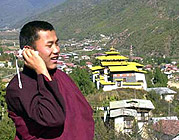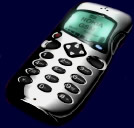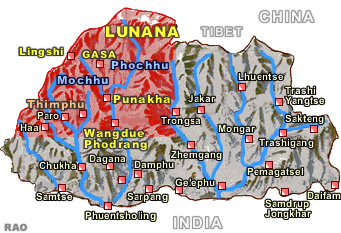 |
Bhutan Development |
 |
Bhutan Information |
|
|
 |
| B-Mobile
in Bhutan - The challenge of a Lunana linkage |
 |
 |
| It will be a long time before the Lunaps (people of Lunana) can use a mobile phone to call their relatives in Punakha or order goods from Gasa, the nearest town - about a seven-day walk away. |
|
 |
The remoteness of the gewog is impeding its connectivity, although B-mobile is identifying means to connect the gewog to the cellular network by 2012. There are 189 households in the five scattered villages in the gewog. B-mobile officials say it is the most difficult gewog to connect, because of extreme weather conditions and remoteness.
Bhutan Telecom's project manager Tenzin Dorji said reaching B-mobile network to Lunana is the most challenging project for the company. “The community has a narrow corridor, making transportation of cellular machines and equipment difficult,” he said. Except between mid August to mid September, all the hilltops around the gewog are covered with snow.
Radio frequency engineer for the project, Karma Wangdi said two possible options have been identified - to connect through satellite link or land connection. However, he said, the cost involved for either option would be huge.
Although satellite link was found to be the easiest and fastest way to reach the cellular network, it would cost around USD 144,500 to buy one satellite link, according to the engineer. “If we opt for satellite link, we'll have to hire a chopper to reach satellite infrastructure to the hilltops of Lunana. From there, the link will be connected to Chelela (between Paro and Haa).
“Hiring a chopper for an hour costs between USD 5,000 to 10,000, and the chopper can carry only 300 to 500 kg at a go,” he said.
Karma Wangdi said, if they chose to reach cellular network through land connection, more than four to five towers have to be fixed, and each has to be stationed on hilltops that are at a height of 5,000m above sea level.
Project manager Tenzin Dorji said transportation of equipment and other heavy machines for towers could be carried on mules, but some equipment can only be transported by humans, on their backs. “To reach these equipments to Lunana, one has to walk more than nine days from Gasa,” he said.
In an earlier interview, Lunana gup Dorji Dorlo said they have to walk for days to convey a message from one village to another within a gewog that comprise of eight chiwogs and five villages.
Dorji Dorlo said people of the gewog are hoping for the connectivity of B-mobile at the earliest.
Meanwhile, project officials are exploring every possibility to fulfil the government's mandate of connecting Lunana with B-mobile within 2012.
In 2010, the company took B-mobile services to Barshong, Soe and Naro gewog under Thimphu, Merak and Sakteng under Trashigang, Jomotsangkhar under Samdrupjongkhar and Laya and Lingshi under Gasa.
B-Mobile is in the process of connecting Chokerling in Pemagatsel, Marsthala in Samdrupjongkhar and Bjoka in Zhemgang, and another 109 villages in eight eastern dzongkhags.
 |
| B-Mobile's project manager, Tenzin Dorji, said that four gewogs would be covered next year in the second rural global system for mobile communication (GSM) project phase II. Lunana could be the only gewog without the network because of technical reasons. "It will be expensive and the difficult terrain is also posing a hindrance," he said. However, the gewog would be connected through the satellite network. |
|
Meanwhile, under the rural GSM project phase II, Bhutan Telecom will cover 109 rural villages in eight dzongkhags of Tsirang, Zhemgang, Mongar, Trashiyangtse, Lhuentse, Samdrupjongkhar, Pemagatshel and Trashigang.
The project (second phase) is estimated to cost Nu143.67M, with the government providing a 70 percent subsidy, amounting to Nu 100.57M. The balance of Nu 43.1M will be borne by the company.
Tenzin Dorji said connecting rural gewogs to the network was one of the most challenging and difficult projects ever undertaken by BTL owing to the mountainous terrain. "The main challenges are the commercial power supply, which increases costs, in terms of providing solar power supply system, as well as the challenge to charge mobile handsets," he said.
"The sparse population distribution, in addition to the extremely difficult terrain, challenges the viability of expansion in business terms."
Today, BTL's mobile service has about 300,000 subscribers.
| This article was contributed by Kuenga Tendar, Kuensel, Bhutan's National Newspaper, November
2010 |
 |
top
| more information on Bhutan |
 |
| Links |
 |
 |
 |
Externe Links |
|





